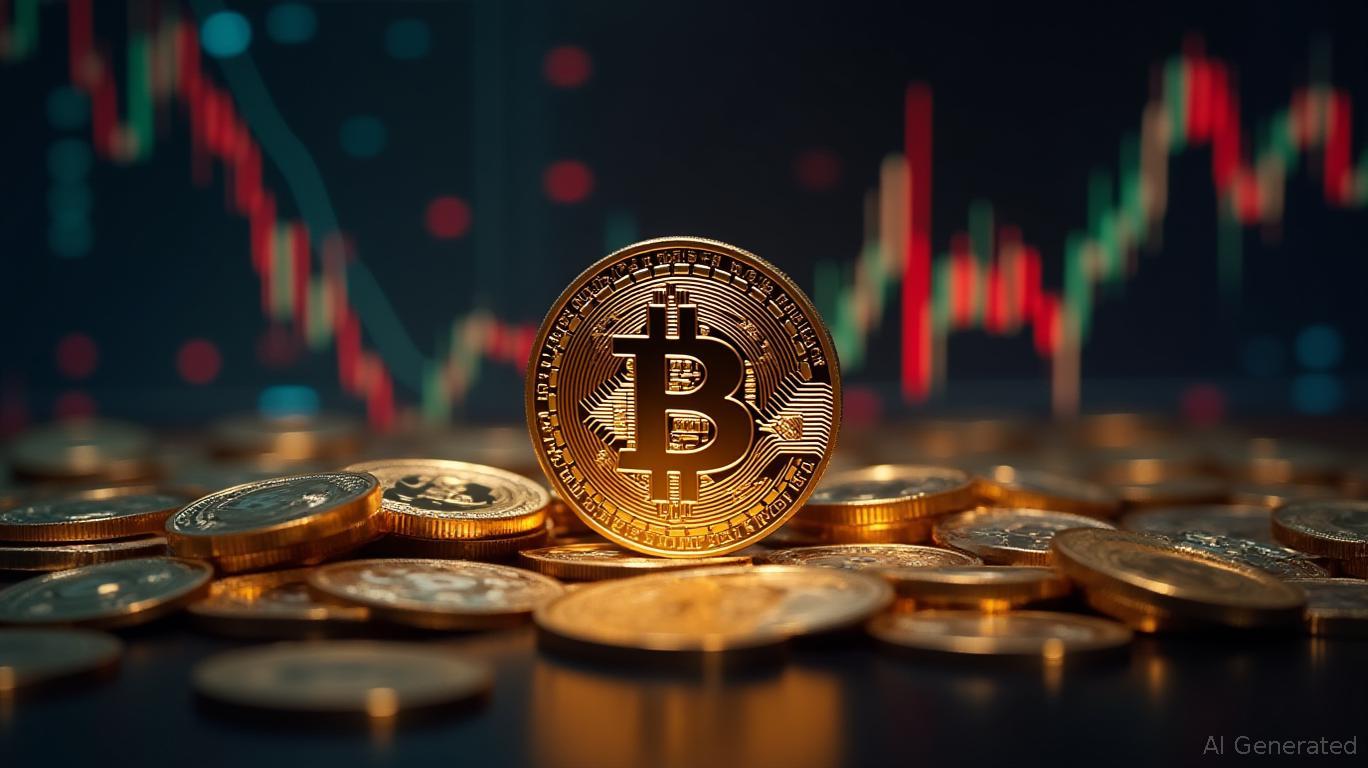Oracle’s aggressive investment in AI could threaten its valuation, while Chainlink seeks to build trust with a blockchain system that aligns with Federal regulations.
- Oracle’s $38B debt funds AI data centers via Vantage, part of a $500B Stargate initiative with OpenAI. - High leverage (debt-to-equity 4.36) and liquidity risks (current ratio 0.62) raise valuation concerns despite strong earnings. - Chainlink’s Fed-compliant oracle networks aim to boost institutional blockchain adoption, with LINK price projections up to $46. - Oracle’s AI expansion faces execution risks, contrasting Chainlink’s regulatory alignment in blockchain solutions.
Oracle Corp.'s bold move to expand its artificial intelligence infrastructure is sparking speculation in the market regarding its strategic alliances and potential financial exposure, while blockchain
Oracle’s shares (ORCL) have climbed in 2025 on the back of its AI-centric growth plan, though experts caution about its valuation. With a debt-to-equity ratio of 4.36 and a current ratio of 0.62, the company faces significant leverage and liquidity challenges, despite robust profit growth and a five-year average ROE of 152.75%, as outlined in a
Chainlink, a decentralized oracle network, is presenting itself as a compliance-friendly solution for institutional blockchain integration. At the Federal Reserve Payments Innovation Conference, co-founder Sergey Nazarov emphasized
The relationship between Oracle’s AI pursuits and Chainlink’s institutional blockchain offerings highlights broader trends in the market. Oracle’s data center investments and collaboration with OpenAI reflect a strong commitment to AI, though its valuation remains debated. According to Seeking Alpha, analysts believe
Oracle’s Stargate initiative, which includes the Port Washington facility in Wisconsin, is projected to generate 4,000 construction jobs and 700 permanent positions, though there has been local resistance due to environmental worries, according to
As Oracle contends with execution challenges and questions about its valuation, Chainlink’s Fed-compatible oracle approach presents a different story focused on regulatory compliance and institutional uptake. Both firms illustrate the intense interplay between technological progress and market dynamics in the AI and blockchain industries.
Disclaimer: The content of this article solely reflects the author's opinion and does not represent the platform in any capacity. This article is not intended to serve as a reference for making investment decisions.
You may also like
Institutions Support Sei as a Link Between DeFi and Traditional Finance
- Sei Network's SEI token gains traction as institutional adoption accelerates, with $10B+ DEX volume and partnerships with BlackRock, Hamilton Lane, and Apollo. - Hamilton Lane's $1T tokenized private-credit fund on Sei in October 2025 highlights blockchain's role in real-world asset (RWA) integration and DeFi-traditional finance bridging. - SEI's Q3 2025 financials show $578.5M revenue and $164.2M net income, supporting long-term growth amid bullish price forecasts up to $2.08 by 2030. - Short-term techn

21Shares Plans Return with Launch of HYPE ETF: A Detailed Look
New Fund to Follow HYPE's Market Performance and Staking Rewards as 21Shares Eyes Comeback

Bitcoin News Today: Bitcoin Eyes $110k Surge—Is $1.51B at Risk of Liquidation or Does This Reflect Growing Institutional Trust?
- Bitcoin near $120,000 triggers $1.51B short liquidation risk if it breaches $110,000, per Yahoo Finance analysis. - Bitcoin ETFs see $931M inflows vs. Ethereum ETF outflows, highlighting institutional preference for Bitcoin's liquidity. - Security threats (40.8% social engineering scams) and regulatory actions (AUSTRAC $37k fine) persist despite market optimism. - Bitcoin's $115k "CME gap" breakout could validate bullish momentum, but $1.51B liquidation risk underscores market fragility.

Ethereum News Today: Ethereum’s Fusaka Update: Achieving Greater Scalability While Maintaining Security
- Ethereum's Fusaka upgrade launches Dec 3 after Hoodi testnet success, enhancing scalability and security via PeerDAS and gas limit increases. - Upgrade raises block gas limit 5x to 150M units and enables parallel smart contract execution, doubling transaction capacity while maintaining decentralization. - Three-phase rollout includes mainnet activation, blob capacity expansion, and hard fork, with post-upgrade focus shifting to the Glamsterdam upgrade for block time optimization. - While addressing Ether
